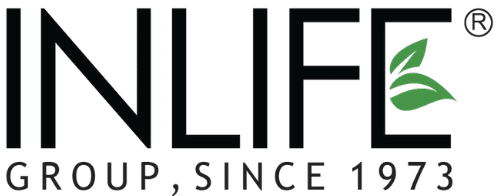Cardiac Health, Stress Management
5 Powerful Yet Easy Yogasanas That Will Help Lower High Blood Pressure
High blood pressure is a silent killer because it does not show any symptoms to warn you that you have a problem. You can have high blood pressure for years with a lack of your knowledge.
And if it continues, it will lead to heart attacks, strokes, and kidney disease. Diseases of adrenal gland & thyroid can cause high blood pressure; pregnancy, medication, and illicit drug use is also one of the reasons for high blood pressure.
High blood pressure can most often be discovered during a routine physical checkup.
 It generally causes a lot of serious health problems and often leads to heart failure, heart attack, and strokes as it starts the formation of plaque in the arteries.
The normal blood pressure for everyone is 110/70 mm Hg while in high blood pressure, it may change by increasing up to 160/100 mm Hg or even more.
Hence, it becomes necessary to prevent and control the blood pressure to avoid any heart ailments.
It generally causes a lot of serious health problems and often leads to heart failure, heart attack, and strokes as it starts the formation of plaque in the arteries.
The normal blood pressure for everyone is 110/70 mm Hg while in high blood pressure, it may change by increasing up to 160/100 mm Hg or even more.
Hence, it becomes necessary to prevent and control the blood pressure to avoid any heart ailments.
 This asana is also called as child or balasana. Shishuasana pose relieves stress and fatigue in the body.
It is also an excellent stress relieving pose that normalizes blood circulation, this pose eases the abdominal muscles and also the muscles of the lower back. It lowers blood pressure by reducing stress and anxiety.
This asana is also called as child or balasana. Shishuasana pose relieves stress and fatigue in the body.
It is also an excellent stress relieving pose that normalizes blood circulation, this pose eases the abdominal muscles and also the muscles of the lower back. It lowers blood pressure by reducing stress and anxiety.
 Vajrasana pose is also called as diamond pose, it can be done post lunch or dinner. It aids to control overweight and enhances blood flow to the lower abdomen.
Vajrasana pose is also called as diamond pose, it can be done post lunch or dinner. It aids to control overweight and enhances blood flow to the lower abdomen.
 Sukhasana meditative pose is known as easy pose, it calms and unites your body as well as the mind.
It aids reduce high blood pressure, as it makes your body more stable and your mind free and joyful. It is a meditative asana that works on calming both your mind and the body.
This asana works on your nervous system and regulates its activity. It successfully helps in reducing hypertension, and therefore, directly or indirectly works on bringing down blood pressure.
Sukhasana meditative pose is known as easy pose, it calms and unites your body as well as the mind.
It aids reduce high blood pressure, as it makes your body more stable and your mind free and joyful. It is a meditative asana that works on calming both your mind and the body.
This asana works on your nervous system and regulates its activity. It successfully helps in reducing hypertension, and therefore, directly or indirectly works on bringing down blood pressure.
 Baddhakonasana or bound angle pose yoga pose activates the heart and leads to better circulation of blood all over the body. It also relieves stress and weariness. It is the best stress reliever, which makes it even more useful. This fantastic asana also increases blood circulation and aid to detox the system.
The working of the heart is regulated, so blood flow is in check. This is how it helps to limit and bring down hypertension one of essential Yoga poses for high blood pressure.
Baddhakonasana or bound angle pose yoga pose activates the heart and leads to better circulation of blood all over the body. It also relieves stress and weariness. It is the best stress reliever, which makes it even more useful. This fantastic asana also increases blood circulation and aid to detox the system.
The working of the heart is regulated, so blood flow is in check. This is how it helps to limit and bring down hypertension one of essential Yoga poses for high blood pressure.
 Supported bridge pose or set bandhasana, this energizes your kidneys and soothes the nervous system. It aids to control the blood pressure in the body. Setu Bandhasana regulates blood pressure by enhancing blood circulation and decreasing stress and anxiety.
It opens up the chest and allows more air in the lungs. This yoga asana is also helpful for diabetes people as it keeps blood sugar levels in check.
Supported bridge pose or set bandhasana, this energizes your kidneys and soothes the nervous system. It aids to control the blood pressure in the body. Setu Bandhasana regulates blood pressure by enhancing blood circulation and decreasing stress and anxiety.
It opens up the chest and allows more air in the lungs. This yoga asana is also helpful for diabetes people as it keeps blood sugar levels in check.
What Is High Blood Pressure?
In the human body, the blood circulates and exerts a pressure on the veins, heart chambers and the walls of arteries. If the force increases, it results in high blood pressure. Hypertension is also called as high blood pressure. Due to the lifestyles that you lead and the kind of food you consume, high blood pressure is growing at an alarming rate. It generally causes a lot of serious health problems and often leads to heart failure, heart attack, and strokes as it starts the formation of plaque in the arteries.
The normal blood pressure for everyone is 110/70 mm Hg while in high blood pressure, it may change by increasing up to 160/100 mm Hg or even more.
Hence, it becomes necessary to prevent and control the blood pressure to avoid any heart ailments.
It generally causes a lot of serious health problems and often leads to heart failure, heart attack, and strokes as it starts the formation of plaque in the arteries.
The normal blood pressure for everyone is 110/70 mm Hg while in high blood pressure, it may change by increasing up to 160/100 mm Hg or even more.
Hence, it becomes necessary to prevent and control the blood pressure to avoid any heart ailments.
What Are The Causes Of High Blood Pressure?
1) Age
The older you become and your chance of having high blood pressure increases.2) Family History
If you have close family relatives with high blood pressure, your chances of developing it are significantly higher. So genetic problems that may increase the risk of high blood pressure.3) Obesity And Overweight Problems
Both overweight and obese problems are more likely to increase high blood pressure, compared to people with a healthy weight.4) Some Aspects Of Gender
In general, high blood pressure is more regular among adult men than in an adult woman. However, after the age of 60 years, both men and women are equally susceptible.5) Physical Inactivity
Lack of physical activities, exercise, as well as having a sedentary lifestyle, raises the chance of high blood pressure.6) Regular Smoking
Smoking begins the blood vessels to narrow, resulting in higher blood pressure. Smoking also decreases the blood’s oxygen content, so the heart has to pump faster to compensate, causing a rise in blood pressure.7) Alcohol Intake
People who drink daily have higher systolic blood pressure than people who do not. Generally, systolic blood pressure levels are about 7 millimetres of mercury (mmHg) higher in people who frequently drink than in people who do not drink.8) High Salt Intake
Where people do not eat much salt have lower blood pressures. Where people eat a lot of salt have high blood pressure so, taking inadequate amount is very safe.9) High-Fat Diet
Many health professionals say that a diet which is high in fat leads to a raised high blood pressure chance. However, most dietitians tell that the problem is not how much fat is consumed, but rather what type of fats you consume. Fats sources from plants are avocados, nuts, olive oil, and omega oils are right for you. Saturated fats, which are common in animal-sourced foods, as well as trans fats, are bad for you.10) Mental Stress
As you all know that mental stress, especially over the long term, can have a severe effect on blood pressure. It has a higher risk of developing high blood pressure later in life.11) Diabetes
People who are with diabetes are at a higher risk of developing high blood pressure. Among the people with type 1 diabetes, high blood sugar is a risk factor for incident hypertension – effective and consistent blood sugar control, with insulin, decreases the long-term risk of developing hypertension. People with type 2 diabetes are at risk of hypertension due to high blood sugar, as well as other factors, such as overweight and obesity, particular medications, and some cardiovascular diseases.12) Pregnancy
Pregnant women have a higher risk of growing hypertension than women of the same age who are not pregnant. It is the most common medical problem encountered during pregnancy, complicating 2 to 3 percent of all pregnancies.Want To Know Signs And Symptoms Of High Blood Pressure?
Most people suffer from below signs and symptoms- A headache
- Vomiting
- Dizziness
- Blurred or double vision
- Nausea
- Nose Bleeding
- An irregular or forceful beating of your heart
- Breathlessness.
What Can Be Yoga Poses For Hypertension?
Shishuasana
 This asana is also called as child or balasana. Shishuasana pose relieves stress and fatigue in the body.
It is also an excellent stress relieving pose that normalizes blood circulation, this pose eases the abdominal muscles and also the muscles of the lower back. It lowers blood pressure by reducing stress and anxiety.
This asana is also called as child or balasana. Shishuasana pose relieves stress and fatigue in the body.
It is also an excellent stress relieving pose that normalizes blood circulation, this pose eases the abdominal muscles and also the muscles of the lower back. It lowers blood pressure by reducing stress and anxiety.
Steps
- Sit on the floor on your knees with a straight back and place your hands on your thighs.
- Let your big toes connect to each other as you sit on your heels. Now, keep the knees hip-width apart.
- Bend your upper body in front and let the torso rest in among the thighs.
- Extend your hands forward and place above the head on the floor with the palms touching the floor. Be in this pose for a minute.
Vajrasana
 Vajrasana pose is also called as diamond pose, it can be done post lunch or dinner. It aids to control overweight and enhances blood flow to the lower abdomen.
Vajrasana pose is also called as diamond pose, it can be done post lunch or dinner. It aids to control overweight and enhances blood flow to the lower abdomen.
Steps
- Sit on the floor in a child position, and keep the feet and legs together.
- Now let your hips rest on your heels and your thighs on the calf muscles.
- Put your hands on your knees by facing your palm towards the ground, and fix the gaze forward.
- Now start breathing and bring your focus on it. Breathe and hold the pose for minimum 1-2 minutes.
Sukhasana
 Sukhasana meditative pose is known as easy pose, it calms and unites your body as well as the mind.
It aids reduce high blood pressure, as it makes your body more stable and your mind free and joyful. It is a meditative asana that works on calming both your mind and the body.
This asana works on your nervous system and regulates its activity. It successfully helps in reducing hypertension, and therefore, directly or indirectly works on bringing down blood pressure.
Sukhasana meditative pose is known as easy pose, it calms and unites your body as well as the mind.
It aids reduce high blood pressure, as it makes your body more stable and your mind free and joyful. It is a meditative asana that works on calming both your mind and the body.
This asana works on your nervous system and regulates its activity. It successfully helps in reducing hypertension, and therefore, directly or indirectly works on bringing down blood pressure.
Steps
- Sit with crossed legs in a relaxed mood and erect your spine on the floor. Keep your hands on your lap.
- Take breathe slowly and lift up your hands with the palms facing towards the ceiling.
- Intersect your fingers to give a stretch to the upper body. Hold the pose for 30-40 seconds.
Baddhakonasana
 Baddhakonasana or bound angle pose yoga pose activates the heart and leads to better circulation of blood all over the body. It also relieves stress and weariness. It is the best stress reliever, which makes it even more useful. This fantastic asana also increases blood circulation and aid to detox the system.
The working of the heart is regulated, so blood flow is in check. This is how it helps to limit and bring down hypertension one of essential Yoga poses for high blood pressure.
Baddhakonasana or bound angle pose yoga pose activates the heart and leads to better circulation of blood all over the body. It also relieves stress and weariness. It is the best stress reliever, which makes it even more useful. This fantastic asana also increases blood circulation and aid to detox the system.
The working of the heart is regulated, so blood flow is in check. This is how it helps to limit and bring down hypertension one of essential Yoga poses for high blood pressure.
Steps
- Sit on the floor with by erecting spine. Exhale and bend your knees outward and join the sole and pull the heels towards the pelvis as close as you can.
- Hold your feet firmly with your hands. Keep your body stretched and shoulders back and your hands straight.
- Your knees should touch the floor. But do not force or strain them. Inhale and lift your knees.
- Repeat the procedure while breathing in and out, and do it for a minute.
Setu Bandhasana
 Supported bridge pose or set bandhasana, this energizes your kidneys and soothes the nervous system. It aids to control the blood pressure in the body. Setu Bandhasana regulates blood pressure by enhancing blood circulation and decreasing stress and anxiety.
It opens up the chest and allows more air in the lungs. This yoga asana is also helpful for diabetes people as it keeps blood sugar levels in check.
Supported bridge pose or set bandhasana, this energizes your kidneys and soothes the nervous system. It aids to control the blood pressure in the body. Setu Bandhasana regulates blood pressure by enhancing blood circulation and decreasing stress and anxiety.
It opens up the chest and allows more air in the lungs. This yoga asana is also helpful for diabetes people as it keeps blood sugar levels in check.
Steps
- Lie flat on your spine on the floor and then bend your knees upward. Keep arms beside the body.
- Now press the arms on the floor and then lift your hips and back up from the floor.
- Then with the support of the neck, shoulders, and also hands, slightly lift the upper back. Hold the pose for a 60seconds.
To Prevent A High Blood Pressure Diagnosis, Make These Healthy Lifestyle Choices
- Maintain a healthy weight. When it comes to hypertension prevention, your weight is very essential. People who are suffering from the overweight problem should try to lose weight, and people of average weight should avoid adding any pounds. If you have extra weight, losing as little as 10 pounds can help prevent high blood pressure.
- Eat a balanced diet. Eating healthy foods can help keep your blood pressure in control. Get plenty of fruits and vegetables, especially that are rich in potassium, and limit your intake of excess calories, fat, and sugar.
- Cut back on salt. For many of them, eating a low-sodium diet can help you keep blood pressure normal. The higher the sodium intake, the higher the blood pressure. You can cut back on your total amount of salt intake by avoiding high-sodium packaged and processed foods and do not add extra salt to your meals.
- Exercise regularly. Get moving to prevent hypertension. Physical activity is important. The more time of exercise you get, the better, but even a little bit can help control blood pressure. Moderate exercise for about 30-40 minutes three times a week is a good start.
- Limit the alcohol. Drinking too much alcohol can lead to high blood pressure. Hence for both men and women, no more than one drink a day is recommended.
- Monitor your blood pressure. Ensure that you have your blood pressure measured daily, either at your doctor’s office or home. High blood pressure often occurs with no signs, so only blood pressure readings will let you know if your blood pressure is on the rise.
- If your doctor determines that you have pre-hypertension — blood pressure in the range of 120-139/80-89 millimetres of mercury (mmHg) that puts you at increased risk of developing hypertension — your doctor may recommend extra steps as a safeguard.


